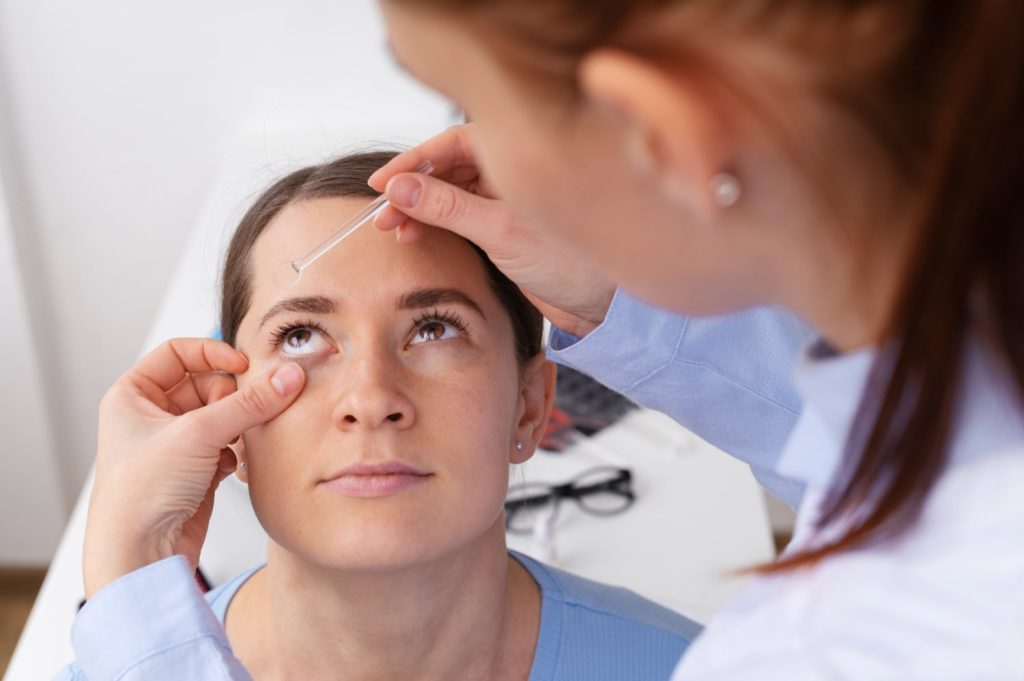
טיפות דמעות – מה זה ולמה משתמשים בהן?
טיפות דמעות הן תמיסות רפואיות או קוסמטיות שמטרתן להקל על
Demodex mites are tiny, microscopic organisms that call human skin home. They are part of our skin flora, often living harmlessly on our face, especially in the hair follicles of our eyebrows and eyelashes. However, under certain circumstances, the overgrowth of these mites can lead to skin and eye diseases such as blepharitis and dry eye disease. In this article, we'll delve into the connection between demodex mites and these eye conditions, and illuminate the complex roles these tiny organisms play in eye health.

The demodex mite is a type of parasitic mite that infests the hair follicles and mammary glands of humans. There are two main species, Demodex folliculorum and Demodex brevis, which mainly inhabit the eyelash follicles and the meibomian glands, respectively. Normally, these mites live symbiotically with their human hosts, causing no apparent harm. However, when their population increases, health problems can arise.
Blepharitis is a common inflammatory condition affecting the edges of the eyelids, characterized by symptoms such as redness, swelling, itching and discomfort in the eyes. It is traditionally associated with bacterial infections or scaly flakes and crusts at the base of the eyelashes.
However, studies published in recent years increasingly implicate the Demodex mite as a significant contributor to certain types of blepharitis, often referred to as Demodex blepharitis. Overpopulation of these mites can cause mechanical blockage of hair follicles and hair glands, which leads to inflammation. Moreover, these mites may carry pathogenic bacteria such as Bacillus oleronius, which exacerbates the inflammatory response.
In Demodex blepharitis, patients often present with cylindrical scales or collarettes at the base of the eyelashes, a clinical hallmark of this condition. Correct diagnosis is essential because the treatment of Demodex blepharitis differs significantly from traditional blepharitis treatment strategies.
Dry eye disease , characterized by insufficient or poor quality tears, is a multifactorial condition that leads to symptoms such as eye discomfort, visual disturbance and tear film instability. Although traditionally associated with factors such as age, hormonal changes and certain medical conditions, there is growing evidence to suggest that Demodex mites may contribute to this disease.
Demodex mites, especially D. brevis, inhabit the meibomian glands, which are responsible for producing the oily layer of the tear film that prevents the evaporation of tears. Overpopulation of these mites may disrupt the normal functioning of these glands, leading to Meibomian Gland Dysfunction (MGD), the leading cause of dry eye disease due to increased tear evaporation.
Moreover, the inflammatory response triggered by Demodex mites and their associated bacteria can lead to inflammation of the surface of the eye, further exacerbating dry eye symptoms.
The diagnosis of Demodex infestation is usually based on clinical signs and confirmed by microscopic examination of eyelashes. Epilation of eyelashes, followed by the use of a microscope, can reveal the mites and cylindrical scales, which is decisive for the diagnosis.
Treatment strategies aim to reduce the mite population and control inflammation. The tea tree oil (TTO) is commonly used due to its acrid properties, in the form of wipes or ointments. However, it should be used with caution because of its potential to cause eye irritation.
In more severe cases, oral or topical ivermectin, a broad-spectrum antiparasitic agent, can be considered. Furthermore, the use of artificial tears and anti-inflammatory eye drops can help manage dry eye symptoms associated with Demodex infection.
The role of demodex mites in blepharitis and dry eye disease represents a fascinating area of eye research. These tiny creatures, long considered mere skin symbols, have emerged as significant players in eye health, highlighting the complex balance between our bodies and their microbial inhabitants.
Demodex-related blepharitis and dry eye disease emphasize the importance of accurate diagnosis and targeted treatment. By recognizing the signs of Demodex infestation and understanding its role in these conditions, doctors can tailor treatments that address the root cause, leading to improved patient outcomes.
Obviously, our understanding of Demodex mites and their contribution to eye conditions is constantly evolving. As we continue to shed light on these tiny mites, we not only expand our understanding of their role in eye health but also open the door to new and more effective treatments for blepharitis and dry eye disease.
In conclusion, the Demodex mite, although tiny, has a significant impact on our eye health. Their overpopulation can lead to conditions such as blepharitis and dry eye diseases, which affect the quality of life of many patients. However, with continued research and improved treatment strategies, we are gaining the upper hand in managing these conditions, proving that even the smallest creatures can hold significant health stakes.
Author: Dr. Itamar Arbel – ophthalmologist

טיפות דמעות הן תמיסות רפואיות או קוסמטיות שמטרתן להקל על

ויטמין C הוא אחד הוויטמינים החיוניים ביותר לבריאות העיניים, הודות

מרכז מומחים לאבחון וטיפול מתקדם בתסמונת העין היבשה ומחלות פני שטח העין















